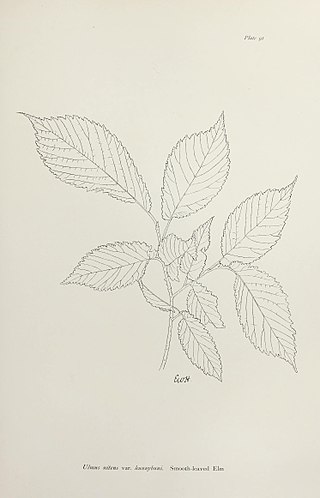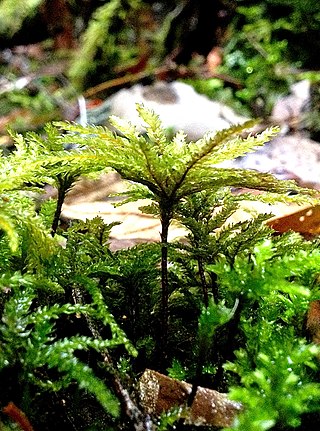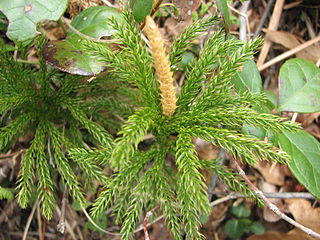The following is a list of vascular plants, bryophytes and lichens which were regarded as rare species by the authors of British Plant Communities , together with the communities in which they occur.
The following is a list of vascular plants, bryophytes and lichens which were regarded as rare species by the authors of British Plant Communities , together with the communities in which they occur.
|
|

Caltha palustris, known as marsh-marigold and kingcup, is a small to medium size perennial herbaceous plant of the buttercup family, native to marshes, fens, ditches and wet woodland in temperate regions of the Northern Hemisphere. It flowers between April and August, dependent on altitude and latitude, but occasional flowers may occur at other times.

Lycopodium clavatum is the most widespread species in the genus Lycopodium in the clubmoss family.
NVC community CG7 is one of the calcicolous grassland communities in the British National Vegetation Classification system. It is one of three short-sward communities associated with heavy grazing, within the lowland calcicolous grassland group, and is regarded as the eastern counterpart of "typical" chalk grassland.

Polytrichum commune is a species of moss found in many regions with high humidity and rainfall. The species can be exceptionally tall for a moss with stems often exceeding 30 cm (12 in) and rarely reaching 70 cm (27.5 in), but it is most commonly found at shorter lengths of 5 to 10 cm. It is widely distributed throughout temperate and boreal latitudes in the Northern Hemisphere and also found in Mexico, several Pacific Islands including New Zealand, and also in Australia. It typically grows in bogs, wet heathland and along forest streams. Additionally, class Polytrichopsida has been shown to thrive in partially open habitats that have been recently disturbed by human activities or even livestock.

Gastrolobium is a genus of flowering plants in the family Fabaceae. There are over 100 species in this genus, and all but two are native to the south west region of Western Australia.

The Field Elm cultivar Ulmus minor 'Hunnybunii' was originally identified as U. nitens var. HunnybuniiMoss by Moss in The Cambridge British Flora (1914). 'Hunnybunii' was reputed to have been commonly planted in the parklands and hedgerows of Essex, Cambridgeshire, and Huntingdonshire before the advent of Dutch elm disease. Melville considered the tree a hybrid of 'Coritana'.

The Field Elm cultivar Ulmus minor 'Sowerbyi', commonly known as the Sowerby Elm, was described by Moss in The Cambridge British Flora (1914). The tree, once referred to as the 'Norfolk Elm' by Smith, was commonly found in the hedgerows and woods of Norfolk, Cambridgeshire, and Huntingdonshire in the early 20th century before the advent of Dutch elm disease. Melville considered it a hybrid of 'Coritana'.
NVC community CG1 is one of the calcicolous grassland communities in the British National Vegetation Classification system. It is one of three short-sward communities associated with heavy grazing, within the lowland calcicolous grassland group, and is regarded as the south-west coastal counterpart of "typical" chalk grassland.

The bishop's crown, Christmas bell, or joker's hat, is a pepper, a cultivar of the species Capsicum baccatum var. pendulum, named for its distinct, three-sided shape resembling a bishop's crown.

Hypnodendron comosum, commonly known as palm moss or palm tree moss, is a ground moss which can be divided into two varieties: Hypnodendron comosum var. comosum and Hypnodendron comosum var. sieberi. Both Hypnodendron varieties most commonly grow in damp locations in the temperate and tropical rainforests of New South Wales, Victoria, and Tasmania in southern Australia and in New Zealand.

Dendrolycopodium hickeyi known as Hickey's tree club-moss or Pennsylvania clubmoss, is a North American species of clubmoss in the family Lycopodiaceae. It is native to eastern and Central Canada and the eastern and north-central United States. The genus Dendrolycopodium is accepted in the Pteridophyte Phylogeny Group classification of 2016, but not in other classifications, which submerge the genus in a larger Lycopodium.

The Field Elm cultivar Ulmus minor 'Hunnybunii pseudo-Stricta' was originally identified as U. nitens var. Hunnybunii pseudo-StrictaMoss by Moss in The Cambridge British Flora (1914). Moss regarded the tree as a "subvariety" of U. nitens var. 'Hunnybunii', with a narrower form.